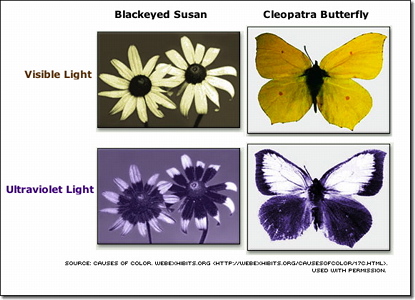![[Brain Image]](../graphics/head_space.gif)
PSY 340 Brain and Behavior
Class 18: Visual Coding and Retinal Receptors
(OUTLINE)
|
|
PSY 340 Brain and Behavior
|
|
Introduction: What does it mean to see something? What is vision about?
![[Wrong Model of Vision]](../graphics/vision.wrong.model.jpg)
- a brain constructs/builds what someone sees by combining many different but separate elements of the scene in front of that person's eyes; construction is guided by the brain's predictive nature-its expectation of what it has seen before.
- coded by the visual system itself; and,
- what we experience visually is NOT a reproduction of the world as it is, but the brain's best guess at what we are seeing (= the predictive brain hypothesis).
Components of Vision: What Are You Seeing When You See Something?
Our visual system reveals its constructive nature when we encounter visual illusions
The 2023 Best Illusion of the Year Contest Winners:
- 1st Place: Platform 9 3/4s (Matt Pritchard) (YouTube version, 45")
- 2nd Place: Tower of Cubes (John Salmon) (YouTube version, 1'08)
- Very clear example of the predictive brain approach to perception
A further illustration of the importance of "top down" or predictive expectancy in visual perception comes from the way the visual system (which we will outline later in the class and in the next class) actually compresses the richness and detail of the visual information at every step as shown in the figure below.
A. The Eye and Its Connections to the Brain
The Retina (see diagram above and below)
The Fovea & the Periphery of the Retina (see diagram above)
- The bottom layer contains the photoreceptor cells (rods & cones).
- The second layer which is comprised of horizontal and bipolar cells.
- The third layer which is comprised of ganglion and amacrine cells. The ganglion cells lead to the optic nerve.
- Blind spot: where optic nerve leaves eye
- This area is physiologically designed to provide very detailed images of what you look at.
- Photoreceptors in the periphery respond to much lower or fainter light levels.
B. Visual Receptors: Rods and Cones
Rods: respond to low levels of light (not to bright light) and most abundant in the periphery of the retina.
Cones: respond to bright light, essential for color vision, and most abundant in the fovea. There is roughly 1 cone for every 20 rods (ca. 6 million cones and 120 million rods).
Both rods & cones contain photopigments: these are substances that release energy when they are struck by light (but are stable in the dark). Each photopigment is bound to proteins called opsins. Different kinds of opsins make the photopigments sensitive to different wavelengths of light.
Transduction: the process by which photopigments release their energy when struck by light which, in turn, activates the visual receptors => turning a physical stimulus into a neural signal
C. Color Vision
Human beings see light with wavelengths between 350 nm (violet) and about 700 nm (red).

- Thomas Young (d. 1829) and Herman von Helmholtz (d. 1894)
- The differing types of cones are maximally receptive to
- Short-wavelengths ["blue"] (ca. 420 nm; less abundant than "green" or "red" cones)
- Medium wavelengths ["green"] (ca. 540 nm)
- Long wavelengths ["red"] (ca. 570 nm)
- Mostly in the middle of the visual field (= what you can see at any one point in time)
2. The Opponent-Process Theory of Vision
The trichromatic theory has difficulty in explaining both
(1) negative afterimages and

(2) color-vision deficiencies
- Red-green (8% of men, <1% of women)
- Blue-yellow (<1% of men & women)
- Achromatopsia (1 in 33,000)
Ewald Hering (d. 1918) proposed the opponent-process theory of vision,
i.e., we perceive color as a set of three pairs of opposites (red vs. green; yellow vs. blue; white vs. black).
3. The Retinex Theory of Vision
(Dr.
Edwin Land [Inventor of the Polaroid Camera] d. 1991)
- Color consistency
Vision is both a bottom-up process & top-down process